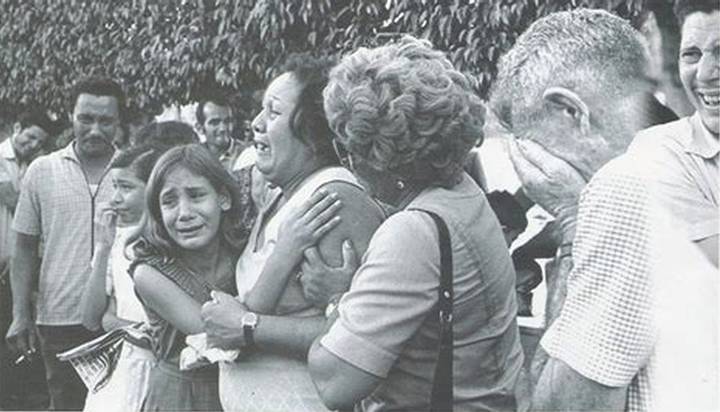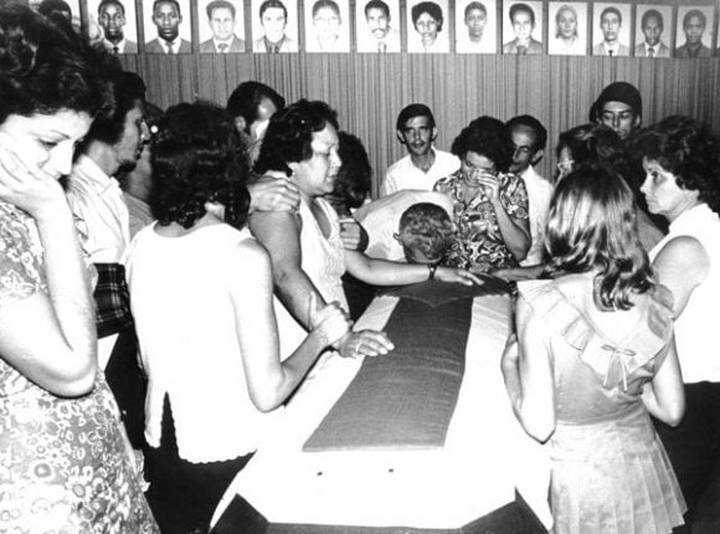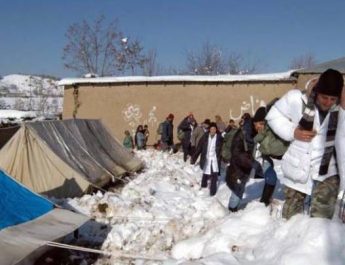By Juan Morales Agüero on October 6, 2020
Today marks the 44th anniversary of the horrendous crime of 1976 when a terrorist bomb blew a Cubana airliner out of the sky over Barbados. Seventy-three people died and their memory will forever be a scar-proof wound in the very heart of the Cuban Homeland.
Among the victims of the monstrous sabotage were members of the Cuban youth fencing team, who were returning home from Venezuela after winning the highest medals in the Central American and Caribbean Championship in their field in Caracas. There were 24 athletes on the team, 16 of whom were barely 20 years old on average.
Rotman, the officer in charge of the control tower at Barbados’ Seawell Airport, would declare to the press two days after the tragedy: “But who hated those guys? Almost everyone on that plane was young. No, no sir, not just the athletes, I mean almost everyone. The athletes, the crew, the Guyanese. Eight Guyanese were students and three others were grandmother, daughter, and granddaughter. The girl, only nine years old. All innocent and healthy. And if such a thing could have happened, who can be at peace in this world?”
Leonardo and Carlitos
Two of those young Cuban fencers were from Las Tunas. Leonardo Mackenzie Grant, who was only 22 years old and had a growing reputation in the field, and Carlos Leyva González who had just turned 19 and had high hopes for making the Cuban Olympic team. Their families were devastated by the tragedy.
“My mother could never get over that blow,” said Maricela, Carlitos’ sister, sometime later, “she even had to quit her job. She told me that often she saw him at the office door, like when he went to see her there. She died of cerebral thrombosis while carrying that enormous pain inside. My father suffered a heart attack and died in 1979, three years after the tragedy, he too never recovered from the trauma.”
To honor forever the memory of Leonardo and Carlitos, there is now in Las Tunas the Martyrs of Barbados Memorial Museum. It is the only institution of its kind in the country. It contains the tangible memories of the lives of these two young men, whose lives were snuffed out, including their biographies from documents, photos, trophies, medals and personal objects of theirs. In a larger sense, the site constitutes an important source of reference regarding the atrocious circumstances in which the crime was committed.
It was Commander Faure Chomón, then first secretary of the Communist Party in Las Tunas, who originally had the idea of conceiving a museum that would perpetuate in the region the memory of both martyrs. The house where Carlitos’ family lived became the museum and was painted with purpose, both for its symbolism and its construction: a two-story building, lined with wood and with a zinc roof that the father of the fencer -a carpenter- had built near the Hórmigo River, a few blocks from the historical center of the city. The concept was discussed with the current tenants and they willingly and voluntarily agreed to move to another house.
“A few days after the agreement was made, Faure called me to take over the restoration of the premises”, the sculptor Rafael Ferrero told me before his death. The project took some time, because, as the structure was half sunk, first it was necessary to straighten it and even to replace the boards of the walls and the slabs of the floor. But it was worth it because the result could not have been better.
“Ferrero still had a new task ahead of him which was to build a fencing academy for children in the area in the courtyard of the memorial! It was done with the aim of linking on its platforms the knowledge of history with the practice of sport,” he says, and, by the way, among the first people enrolled in the area were relatives of Carlitos and Leonardo.
The museum opened its doors on July 2, 1977, after an intense period of searching and collecting information to fill the shelves and display cases. As soon as the visitor passes through the front door the first thing they see is the photos of the 73 victims of the sabotage, including those of the five Koreans and 11 Guyanese, technicians and sportsmen. It makes your skin crawl, that goes down to your marrow as one contemplates all those faces so full of life.
Along with the images arranged in rows, a painting mimics Cuba’s DC-843 and, next to it, the chronology since it took off in Guyana, its stops in Trinidad-Tobago and Barbados, and, finally, its fall into the sea in front of a beach full of stunned bathers who watched the tragedy unfold. A sketch reproduces the plane’s route, as captured by Seawell Airport’s radar. On a simple pedestal, there sits a piece of the fuselage rescued from the ocean that now accuses the murderers forever.
The martyrs’ belongings and memories are everywhere. Here, a snapshot of Carlitos at 35 days old. There, his UJC card and his library card. Also a notebook with notes from classes and his training diary. A postcard dedicated in his own handwriting to his mother for Mother’s Day.
From a nearby mural, a certificate issued by the Mexican Olympic Committee recognizes Leonardo’s skills as an artist. He also owns trophies, plaques, clothes, a radiogram addressed to his brother, a doctor, weapons, proof of military service, keyrings, letters of reference, his identity card, and more.
Something that the museum-memorial exhibits with particular pride are the Soles sin Manchas medals, given to the victims’ families on the 25th anniversary of the crime. In the courtyard of the museum, a sculpture stands defiantly. It is the work of the Matanzas artist Juan Esnard Heydrich, who donated it to the institution in 1978. To create it he appealed to the famous verse of Bonifacio Byrne that identifies it, the emblem of the nobility and the value of the Cuban people. The piece is made of welded metal, the roughness of which gives it a unique drama.
It tearfully recreates a human body torn to pieces and consumed by fire, but erect in spite of everything, with one arm raised and a closed fist, ready to defend at any cost the soil, dignity, and sovereignty of the Homeland.
In the back of the main building, where Carlos Leyva’s father’s carpentry workshop once stood, the fencing area is an allegory for the fallen in that wild aerial massacre of October 6, 1976. Several generations of fencers have been trained there, almost all of them under the expert eye of Delio Pavón, who was also the coach of Leonardo and Carlitos.
But the Barbados Martyrs memorial is more than photographs, display cases, sculptures, and shelves. Among its purposes is to insert itself into the community to make it an active participant in the history of a crime that, 44 years later that continues to lacerate the sensibility of Cubans with the intensity of the first day.
When I am about to leave, several children burst in from the street. They are students from the Camilo Cienfuegos special school, who come to the museum to rub shoulders with history.
“What they learn here they take back to the classroom,” says their teacher, “you should see them with your own eyes! Everyone here knows how much terrorism has hurt Cuba.”
Source: Cubadebate, translation Resumen Latinoamericano, North America bureau




